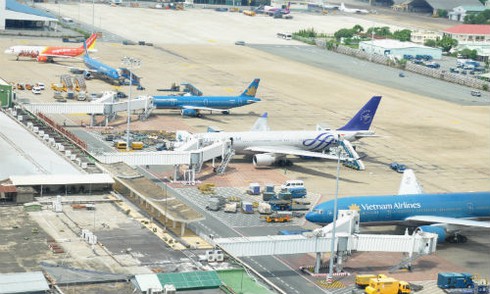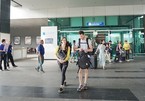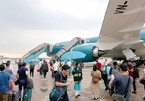 |
Vietnam's aviation industry continued to experience healthy double-digit growth in 2019 amid issues at some key airports, according to Viet Dragon Securities Company (VDSC).
Overall air traffic volume was up 12% year-on-year and reached approximately 116 million passengers. Although the growth rate of international passenger traffic continued to outpace domestic passenger growth, the gap between the two has contracted.
Domestic passenger volume growth rate was estimated at 11% year-on-year, picking up strongly from a 6% expansion in 2018. This was likely driven by new supply from brand-new carrier Bamboo Airways, following years when the domestic market was not prioritized by established operators such as Vietjet Air, Vietnam Airlines and Jestar Pacific.
On the contrary, international passenger volume growth showed a moderate deceleration, rising only 14% year-on-year in 2019 vs 21% year-on-year in 2018.
Though this growth rate was in line with the growth of the foreign inbound tourist arrivals by air of 15% year-on-year for 2019, VDSC attributed this slowdown to the estimated sluggish international passenger volume rise of only 5% year-on-year at Tan Son Nhat Airport, which accounts for over 40% of Vietnam’s international air passengers. Its runways and passenger terminals are experiencing serious overload issues.
In the meantime, other major terminals such as Noi Bai, Cam Ranh and Da Nang all maintained double-digit growth in terms of international passenger volume at 14%, 25%, 23% respectively.
Looking forward, VDSC expected a positive outlook on the industry’s long-term prospects. Airports Council International forecasts that Vietnam will have the fastest air passenger growth in the world in the period of 2018-2040 with an average annual growth rate of 6.2%.
In fact, the market is likely to benefit from many favorable factors such as rising of the affluent middle class and the high penetration of low-cost carriers, making air travel more affordable.
Additionally, the government's efforts to promote tourism together with the expansion of international routes by domestic carriers are expected to further enhance the growth of passenger traffic.
On the downside, infrastructure constraints, especially at major airports’ airfield, could hinder growth. The capacity of the current infrastructure has not kept pace with the industry’s growth. This has led to some aviation terminals operating beyond their designed capacity.
More importantly, the availability of landing/take-off (LTO) slots is a shortfall as there are no remaining LTO slots during peak hours at Tan Son Nhat and Noi Bai airports.
Furthermore, the Civil Aviation Authority of Vietnam (CAAV) forecasts the available aprons at Noi Bai Airport may run out in the near future and those at Tan Son Nhat are used up in the period up to 2022.
In addition, the runways at these two airports have been degraded after years of not having seen major rehabilitation. The maintenance has been increasingly vital to ensure safe flights. However, as these runways are state assets, Airports Corporation of Vietnam (ACV), as a non-SOE, could not carry out the maintenance with its own money.
What’s worse, the state budget has not allocated money for maintenance expenditures. By now, these runways are still not fixed.
The Ministry of Transport and ACV have submitted several proposals to the government to alleviate this management mechanism issue, making way to do maintenance as soon as possible.
In case ACV gets the nod from the Government, the renovations would take place in the low season of the year. Expected timeline would be from August – December 2020.
As there would be runway closure at these two biggest airports at that time, the overall growth rate of the number of flights as well as passenger traffic volume should see a modest deceleration in the second half of 2020. Hanoitimes

Aviation sector brings most int’l tourists to Vietnam
Airplanes remained the primary means of transport to carry international visitors to Vietnam, with 80% of the total 18 million foreign travelers to the country in 2019 arriving by air.

Vietnam cautious about opening aviation market to foreigners
The Prime Minister has agreed to raise the maximum foreign ownership ratio in Vietnam’s aviation enterprises by 4 percent only.
 Airports Council International forecasts that Vietnam will have the fastest air passenger growth in the world in the period of 2018-2040 with an average annual growth rate of 6.2%.
Airports Council International forecasts that Vietnam will have the fastest air passenger growth in the world in the period of 2018-2040 with an average annual growth rate of 6.2%.